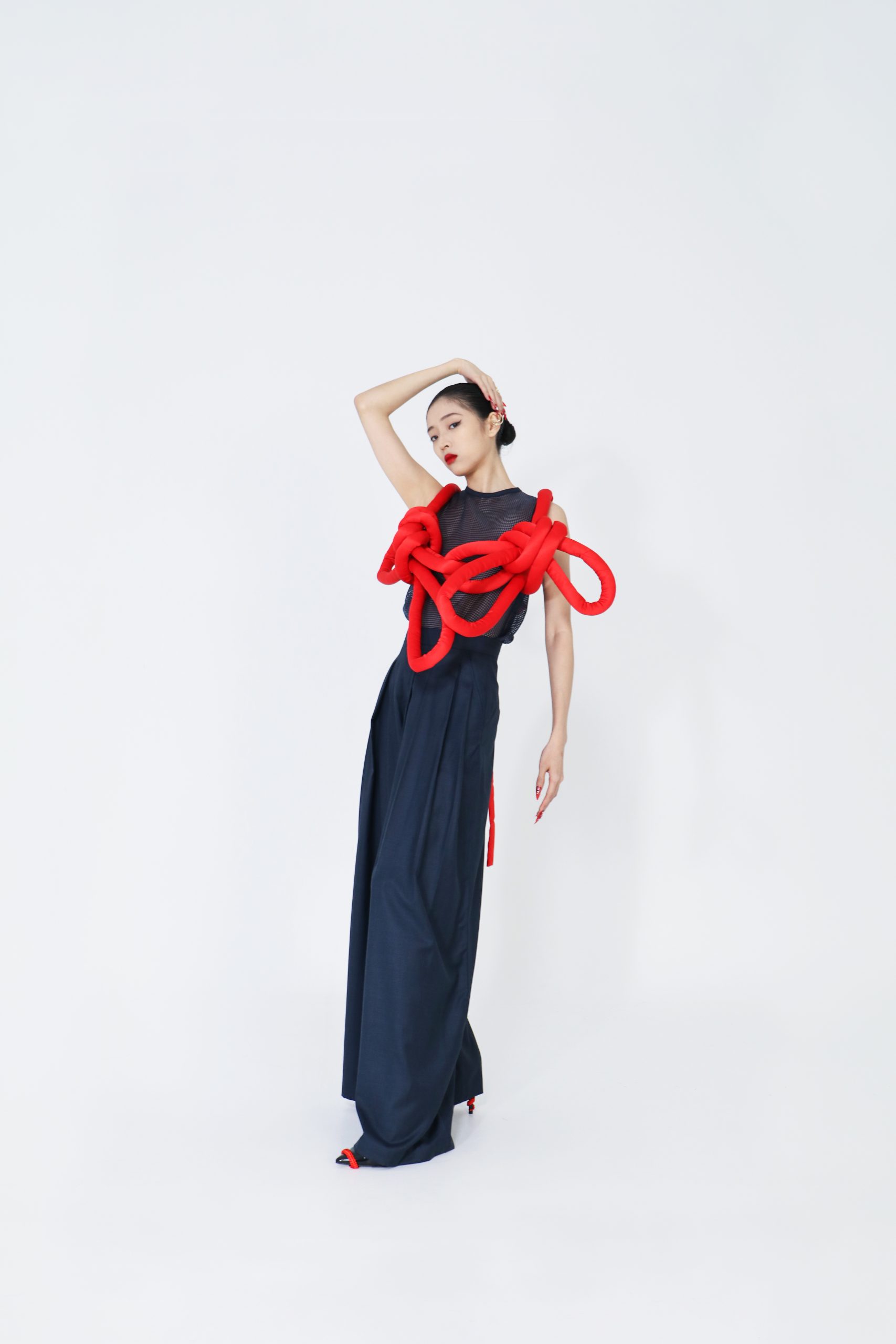
In May this year, graduates of the Fashion Design and Textiles programme at the School of Fashion at Lasalle College of the Arts presented a series of looks created in response to the theme, “Transition”, at the Graduate Fashion Show. GRAZIA Singapore speaks to three of them about their visions for the future of fashion—and how they aim to spearhead cultural change through their work. Last but not least, meet Alison Oh.
Having grown up in a Chinese family, Alison Oh understands that love comes in many guises. For her—and no doubt countless others in Asian households—displays of care frequently took the form of the question, “Have you eaten yet?”
Oh named her graduate collection after this phrase that is a common refrain in households on this side of the world, tapping personal memories of having dim sum with her loved ones for inspiration for the line‑up. According to the 23‑year‑old, the act of giving food to others is the epitome of love in Chinese culture. “Dim sum is a family tradition, so this collection is special to me,” she explains of the dishes that served as references for her designs.

Indeed, upon closer inspection of the collection, one sees shades of the small food items in her designs—the voluminous pleated sleeves of a bolero, for instance, start to look a lot like har gow (shrimp dumplings). Sharing about her creative process, Oh says: “I started to look into the silhouettes of dim sum dishes and collaged them. I also looked into the history of dim sum, and tried to capture the Qing dynasty’s dim sum culture in my collection.”

Wanting the looks inspired by Chinese history to have a modern edge, Oh used neoprene, a decidedly contemporary material, in her designs. The supple synthetic rubber lends itself well to the creation of exaggerated shapes and sizes the likes of the aforementioned sleeves, which look full and “stuffed”.

Oh also employed deconstruction to give the collection a contempo vibe. Think sleeves deconstructed from suit jackets, an abstract nod to the act of embracing by way of mimicking the look of arms wrapped around one’s body; and a ruched pocket attached to the back of a top—a discreet detail many may miss—that presents an invitation for intimacy between two individuals, for one to slip an arm through and hug another.

Admittedly, there seems to be a disconnect between the looks in her collection, with some designs emulating the look of dim sum dishes and others being wrapped in sleeves. But as Oh explains, what ties them all together is her hope for improved connections within society. And a key player in fostering such connections is communication—particularly when it comes to achieving goals if you work in a team, says Oh. “There’d be less misunderstandings, and everyone can understand—if not empathise with—how you feel.” Raising awareness about the “degradation of communication that has been occurring in recent years”—a deterioration that has only been made worse by the social distancing forced upon us by the pandemic, and the general lack of physical and verbal communication in Asian communities—is the main aim of Oh’s collection.

She adds that her approach to addressing the issue was an intentionally optimistic one. “My collection encourages us to get to a better state [of communication] rather than [show] a lack of it,” she says, raising the example of how some of her designs spur wearers to show more physical affection through hugging. Not just a reflection of the unique way in which Asians in general show love through food, her collection represents an ideal state of interpersonal connection, especially with loved ones, that every one of us can aspire towards.
